By Christopher Wills
This week brings two sad anniversaries in Lincoln history: the deaths of Mary Lincoln and Thomas “Tad” Lincoln. Tad died first, on July 15, 1871, at the age of 18. His mother was with him as he died, another loss added to the list that already included sons Eddy and Willie and husband Abraham. Mary Lincoln lived another 11 years in declining physical and mental health before passing away on July 16, 1882, aged 63.
Our immense collection of Lincoln material allows us to look back at the lives and deaths of Abraham Lincoln’s beloved wife and youngest son.
Mary Todd moved from Kentucky to Springfield, Ill., in 1839. Cultured, well-educated, and outgoing, she was popular in the frontier town and had many suitors. Eventually, she married promising attorney and legislator Abraham Lincoln. Here’s their marriage license and the skirt she wore for the wedding:
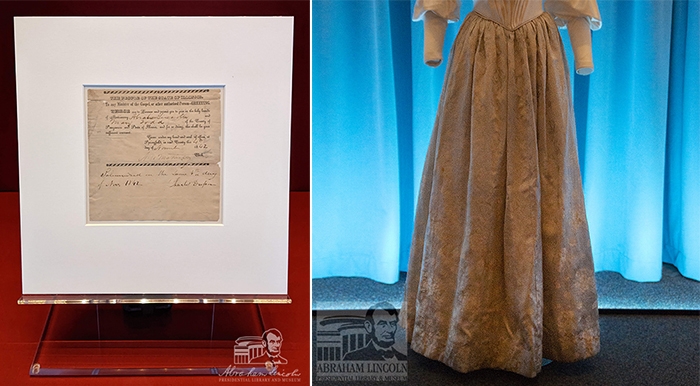
Abraham and Mary had four children: Robert, Edward, William and Thomas, who was always known as Tad. Only Robert lived to adulthood. Eddy died long before the couple ever dreamed of reaching the White House. Willie died during Lincoln’s presidency, dealing them a crushing blow at the same time they faced the incredible pressures of the Civil War. Here’s Mary in mourning garb after Willie’s death:
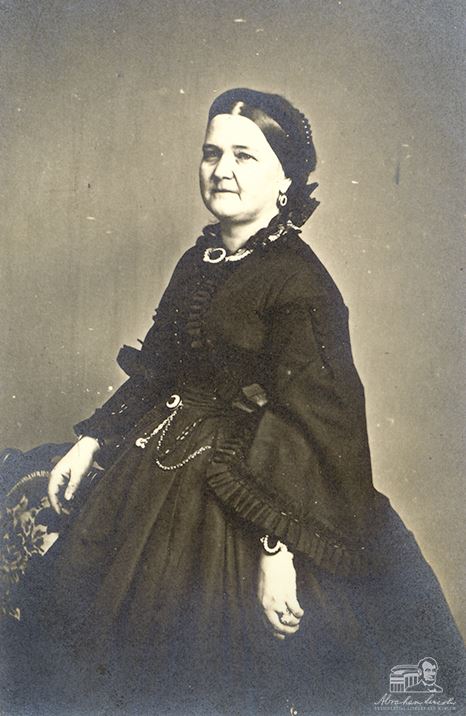
Take a moment and look more closely at the anguish and fatigue in her face.
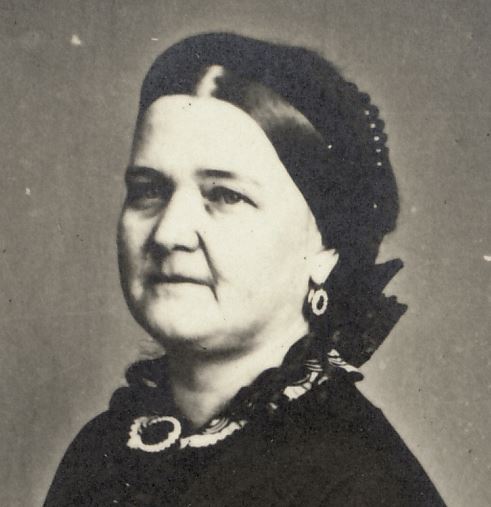
Mary sought comfort in spiritualism – the idea that she could somehow communicate with Willie in the afterlife. The president didn’t share this obsession, but he did suffer from nightmares and fears about Tad’s safety. After one such incident, he telegraphed Mary with a warning: “Think you better put ‘Tad’s’ pistol away – I had an ugly dream about him.” (Was it a working pistol, a toy, or a non-working version of the real thing? We don’t know.)
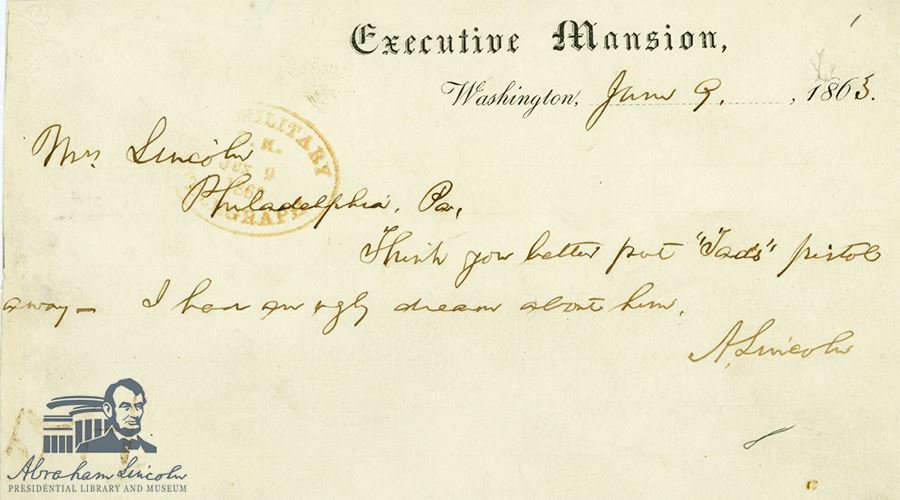
With Robert in college, Tad was now the only child in the White House. He was allowed to run wild, play soldier, keep a menagerie of pets and more. He was even given a miniature (non-working) cannon to play with. Lincoln’s assistant John Hay wrote that Tad gave the “sad and solemn White House of the great war the only comic relief it knew.”

There are no pictures of Abraham and Mary together, let alone one of the couple with their children. But photo editors of the day were able to cobble together photos and illustrations to create this fake image of Abraham, Mary and Tad:
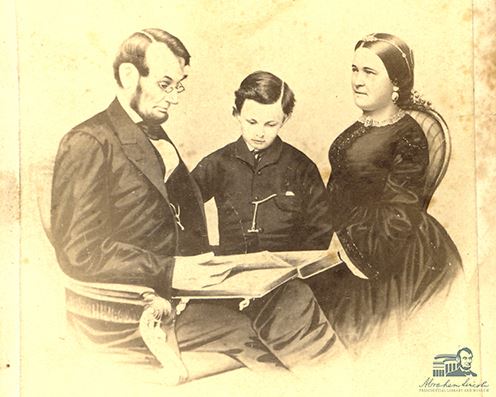
Mary, of course, was devastated by President Lincoln’s assassination. Six months afterward, she would write to Tad’s tutor that, “since my beloved husband was taken away, I do not desire to live.” Tad became a figure of immense sympathy. Popular songwriter J.W. Turner, for instance, wrote a ballad about the 12-year-old that said, “God bless the little orphan boy! A father's darling pride, May heaven guard his youth form, And be his hope and guide.”
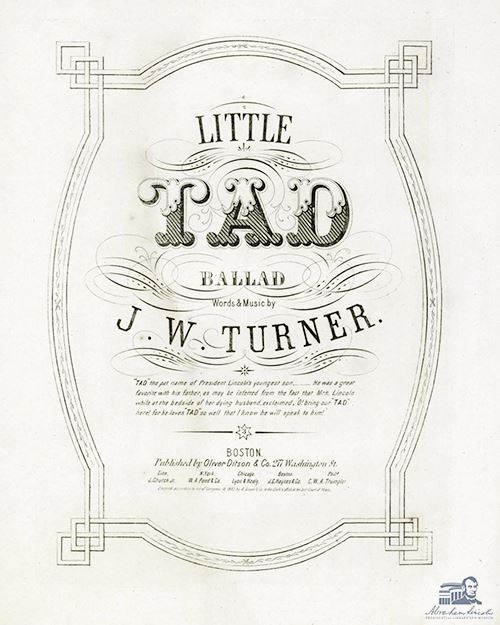
Looking for some anonymity and relief from her many critics, Mary Lincoln took Tad to Europe for several years. Tad had suffered from some sort of speech impediment and possibly a learning disorder. But during his teen years, Tad’s speech improved and his tutors seemed to produce results. Hay, the president’s former assistant, wrote that 18-year-old Tad was “an utterly different person” – sobered by the loss of his father and thoughtful in caring for his mother. Here’s Tad at about 16:
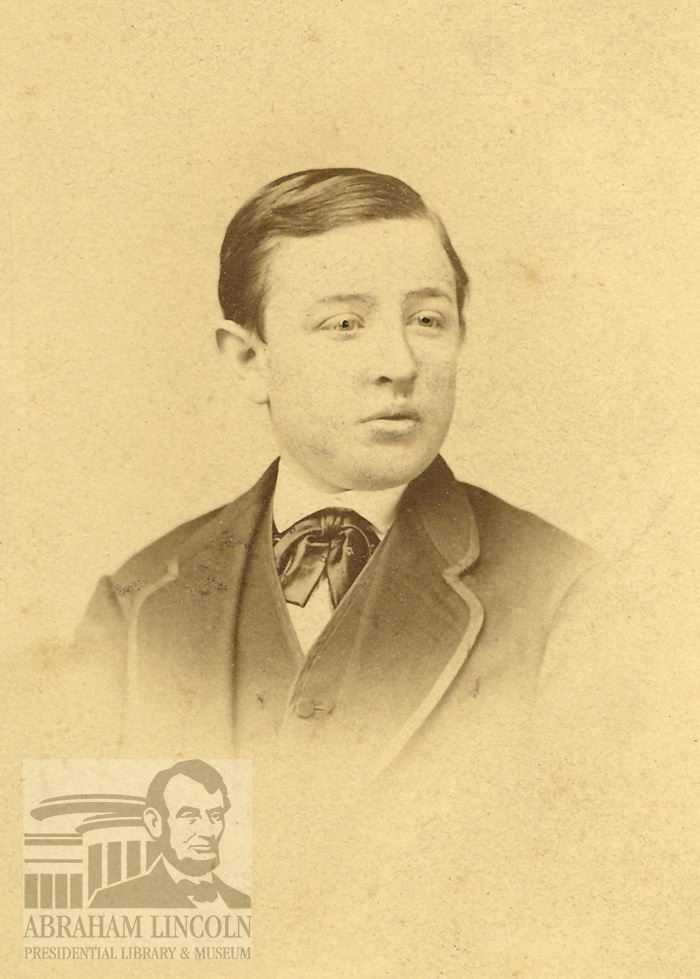
No one is quite sure what killed Tad. Tuberculosis is a likely suspect. Pneumonia and congestive heart failure are also possibilities. What we do know is that he was sick for weeks, gradually growing weaker and more miserable. He was required to sleep sitting up so he could breathe through the night. Eventually, even that made no difference, and Tad drew his last, gasping breath. “The world is complete darkness,” his mother wrote to a friend.
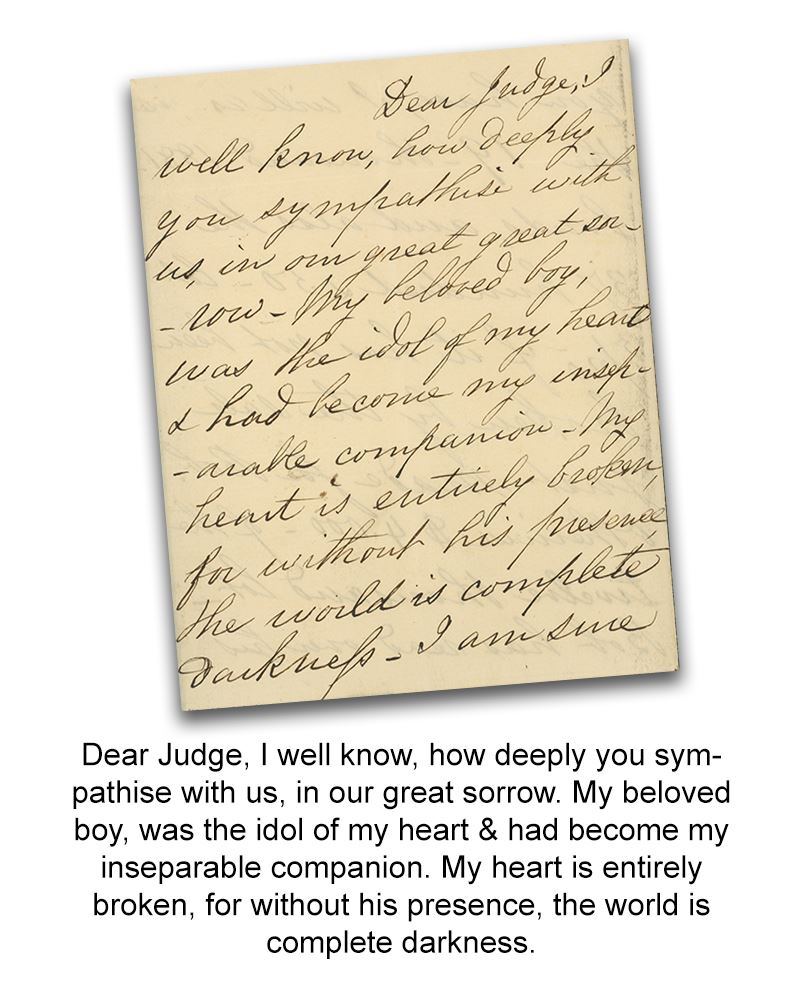
A few years later, in August 1874, Mary Lincoln wrote that she felt her death was near and gave instructions for her funeral. She wanted to be buried in a white silk dress and have her pastor preach from the 23rd Psalm: “Yea, though I walk through the valley of the shadow of death, I will fear no evil: for thou art with me; thy rod & thy staff they comfort me.” She also described the coffin she wanted and where it should be placed in relation to the bodies of her husband and Tad.
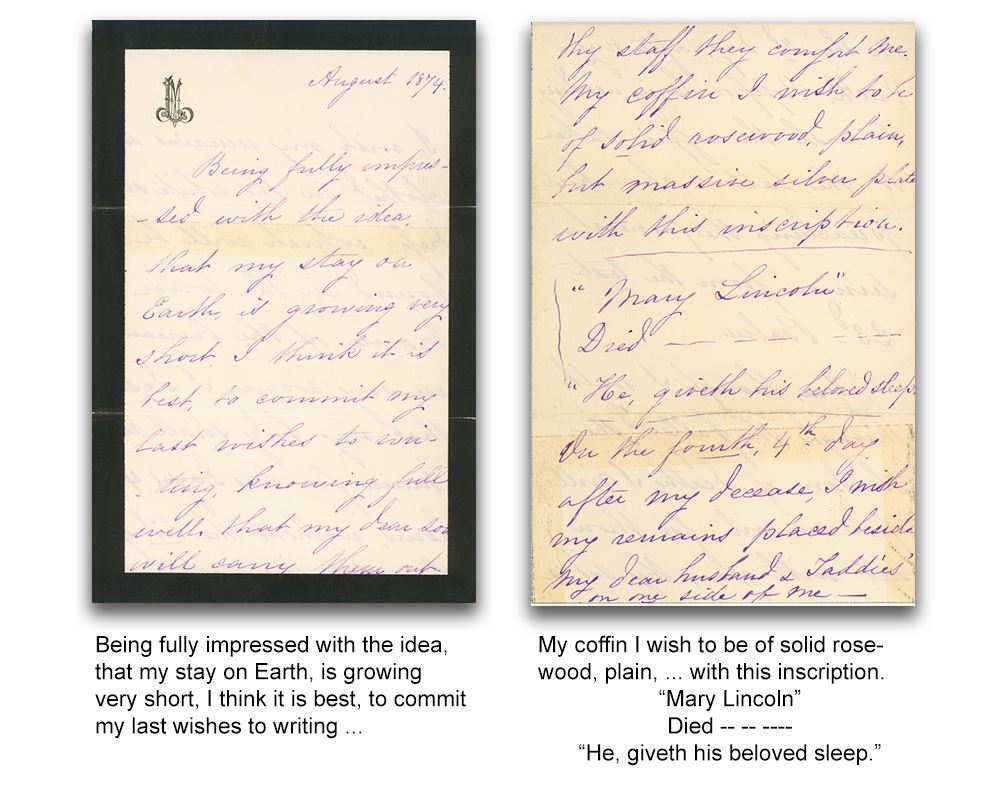
In reality, she was years away from death. Her mental health, however, seems to have declined dramatically. Witnesses described compulsive shopping, paranoia and perhaps hallucinations. Her surviving son, Robert, secretly gathered opinions from doctors who had never examined his mother and arranged a surprise trial on the question of whether she should be committed. Given that Mary had no warning and that her “defense” attorney was selected by Robert, it’s no surprise that the jury found that she belonged in an asylum. At least she got a trial, though. Mary Lincoln biographer Jean H. Baker points out that Illinois was one of the few states that offered this sort of protection to people accused of insanity. In most places, the statement of a husband or son, backed by statements from doctors, would be enough to condemn a woman to the madhouse.
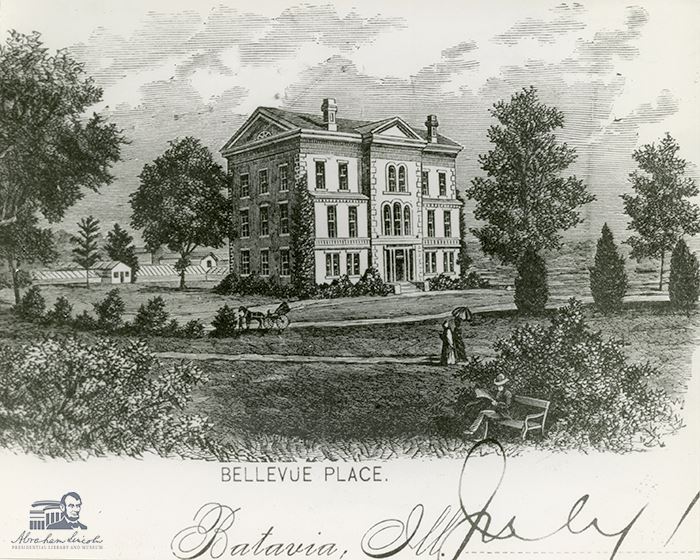
Mary was sent to the posh Bellevue sanitarium in Batavia, Ill. She was a model inmate, cooperating with staff and never needing the physical restraints or drugs that were given to many other patients there. Searching for help in obtaining her release, Mary managed to contact Myra Bradwell, an attorney who was barred from practicing law because she was a woman. Bradwell brought new public attention to the case, pressured the sanitarium to declare Mary fit for release, and arranged for Mary’s sister to take her in. It worked. Mary Lincoln was released after less than four months at Bellevue.
She lived with her sister in Springfield for a while, then moved to southern France, spending four quiet years there until age, failing eyesight and a back injury left her unable to live alone. She returned to Springfield and moved in with her sister again. In 1882, on the anniversary of Tad’s death, Mary collapsed. She lapsed into a coma that night and died the next morning, apparently of a stroke.
The house where she died was the same house where she and Abraham had married forty years earlier.
Wills is the ALPLM communications director.